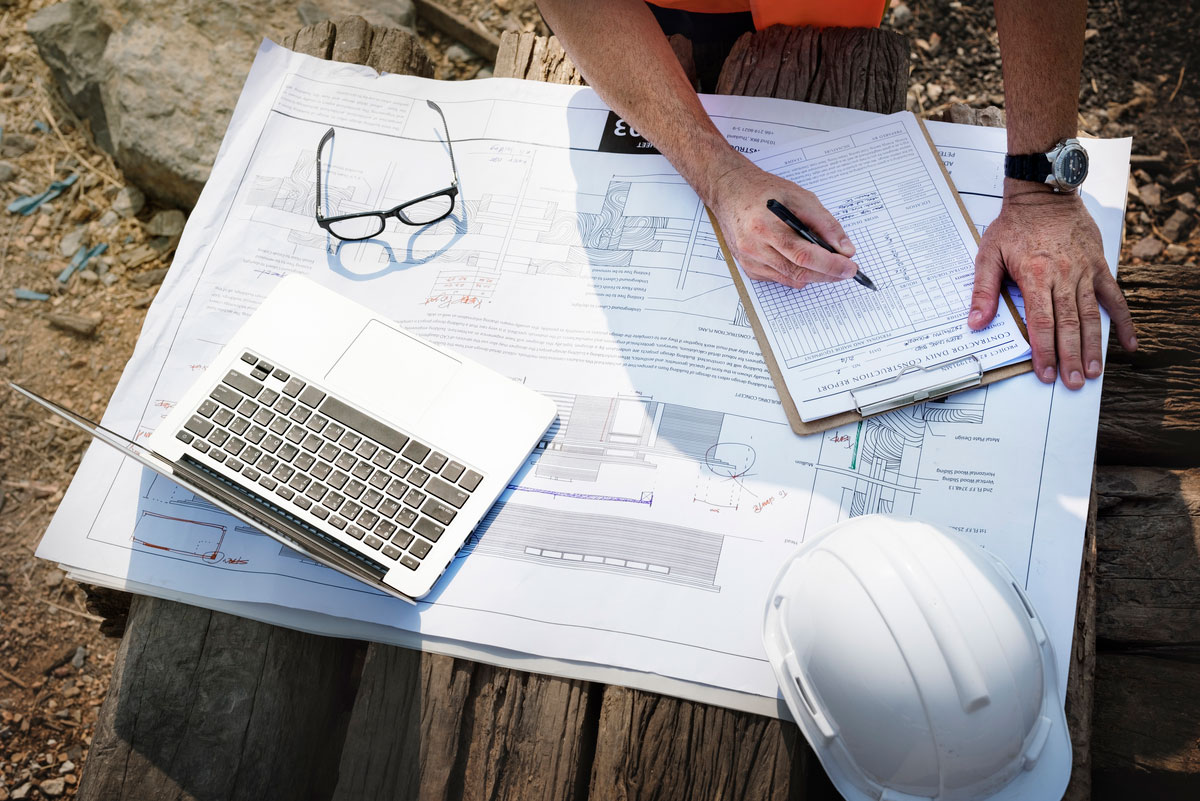Exclusive Neuroject Article: A construction takeoff, sometimes referred to as a quantity or material takeoff, is an important procedure in the construction sector that entails carefully cataloging and measuring the materials required for a project. This procedure is essential to determining the project’s overall cost since it forms the basis for estimating the materials needed for the project’s start and completion.
One cannot stress the importance of construction takeoffs. The construction sector contributes significantly to the economy in the United States alone. The U.S. Census Bureau reports that the construction projects implemented in 2020 had a cumulative value above 1.4 trillion dollars. For contractors and project owners, effectively controlling the expenses of large initiatives is essential.
In this process, accuracy is critical since mistakes in material measurement might have serious cost repercussions. Inaccurate cost estimates resulted in cost overruns in 45% of building projects, according to a survey by RSMeans, a top source of construction cost statistics.
In addition, the construction industry is undergoing a radical digital transformation. Construction takeoff software is becoming more and more popular as businesses realize how much time and money it can save them. Grand View Research projects that the market for construction software, which includes takeoff solutions, will grow to $2.71 billion by 2027.
It is not just an option, but a need for industry professionals to comprehend and use efficient construction takeoff methods and tools in this age of rapid technology innovation and economic dynamism. Construction takeoffs are essential to good project management and financial performance in the construction industry, as they guarantee competitive bids, precise project estimates, and efficient material procurement.
Table of Contents
What is a Takeoff in Construction?
In the realm of construction, a takeoff represents the process through which contractors determine the quantities of each material required to complete a project. A construction takeoff plays a pivotal role in achieving accurate project cost estimations. It is also commonly referred to as a quantity or material takeoff.
Contractors engage in construction takeoffs for various purposes, including bidding on a project, formulating project estimates, or simply ascertaining the quantities of materials to purchase. Let’s briefly explore each of these scenarios:
- Submitting a Bid: When bidding on a project, it’s crucial to have a precise grasp of the material quantities required to calculate material costs within your bid. Failing to possess this vital information could lead to underbidding, resulting in financial losses, or overbidding and missing out on the project. Therefore, conducting an accurate takeoff becomes a pivotal factor in securing a successful bid.
- Creating an Estimate: Part of creating a comprehensive estimate involves understanding the exact quantity of materials needed. Instead of relying on approximate guesses, performing a takeoff provides far more accurate data. Once the material quantities are determined, you can proceed to calculate pricing, incorporating labor hours, taxes, waste percentages, and other expenses necessary to complete the estimate.
- Determining Material Requirements: Even when not preparing a bid or a detailed estimate, you still need to know how much material to procure. Insufficient material purchase can lead to job site delays and extra trips to acquire additional materials, while over-purchasing can negatively impact your profit margin, which is something to be avoided.
In summary, there are numerous compelling reasons to undertake a construction takeoff. If you’re working from blueprints, a takeoff becomes an essential practice for more precise material estimation, ultimately saving you time and costs in the course of your project.
Suggested articles for reading: Construction Cost Estimating | How To Reduce Construction Cost

The Significance of Construction Takeoffs
Construction takeoffs represent a fundamental component of any construction project, as they determine the material costs. Calculating material requirements at an early stage is the initial step in gauging the project’s profitability. Although other costs, such as labor, are yet to be factored in, understanding material costs is pivotal at this juncture. These material costs play a critical role in the bidding, estimation, and procurement processes.
Here’s a breakdown of how construction takeoffs are employed in each phase:
Bidding Process: An indispensable component of the bid document is the estimation of the project’s total cost. This estimation includes a comprehensive breakdown of the various materials required, the quantities of each material, and their associated costs – all of which are derived from a detailed takeoff.
Estimation Process: A construction estimate document delineates all the expenses associated with the project, serving as the foundation for project owners and contractors to prepare their budgets. An estimate remains incomplete without a detailed breakdown of materials, as documented in the takeoff.
Procurement Process: A crucial initial step in a construction takeoff entails the examination of blueprints to ascertain the type and quantity of materials required to complete the project. Subsequent to this phase, the contractor can confidently place material orders, mitigating the risk of over- or under-ordering.
Difference Between a Takeoff and an Estimate
When working in the construction industry, it’s important to differentiate between a takeoff and an estimate. A takeoff solely involves determining the quantities of materials required for a job. It doesn’t encompass any material costs or additional expenses associated with an estimate.
In contrast, an estimate extends beyond the takeoff process. Estimates incorporate the costs of the materials determined by the takeoff, along with other expenses the contractor will encounter. These additional costs encompass factors like travel expenses, taxes, allowances for material waste, labor costs, and any other incidental costs pertinent to the project. Many contractors often employ construction cost estimating software to facilitate this process.
Who Performs Construction Takeoffs?
Contractors and subcontractors are typically responsible for performing takeoffs. They possess the expertise and qualifications needed to ascertain the supplies necessary for project completion. In some cases, contractors may collaborate with estimators who assign prices to the quantities listed in the contractor’s takeoff proposal. Construction cost estimating is a fundamental aspect of this process.
Typically, construction takeoffs are undertaken by estimators in both general contracting and subcontracting firms. Estimators play a pivotal role in discerning the material, labor, and equipment costs required to generate a precise and competitive bid for the project.
While each project boasts its unique attributes, estimators often draw upon their extensive knowledge of requisite materials, acquired through years of experience in the field. Furthermore, their expertise is informed by past projects they’ve successfully executed, which provides valuable insights into potential cost savings. Their primary objective is the meticulous quantification of materials and the calculation of associated costs, ensuring that their bids are both winning and financially sound.
In the case of larger firms, especially those handling more intricate projects, multiple estimators are likely to collaborate, each specializing in quantifying different project scopes.
Estimators frequently refer to project plans, models, and relevant documents as their point of departure, utilizing these resources to compile a comprehensive list of materials essential for the project.

What to Include in Takeoffs
When compiling a construction takeoff for a project, contractors must include various information to ensure the most accurate pricing and quantities. Takeoffs should encompass all materials relevant to the construction project, encompassing raw materials for building structures and incorporating manufactured fixtures for more complex project elements. Both categories are integral to the project and contribute to its overall cost.
Raw materials, for instance, encompass items like wood, concrete, and steel, which contractors use to construct various project components. Manufactured fixtures include items such as lighting, cables, pipes, and windows, which are essential for the project’s functionality.
To create a construction takeoff, an estimator must meticulously quantify every element necessary for project completion, commonly referred to as a “material take-off.” This encompasses all essential raw materials, including items such as wood, rebar, piping, and concrete.
The process is typically bifurcated into two distinct phases: a “quantity takeoff” that entails listing each required material, and a subsequent step in which costs are assigned to each material. While compiling a comprehensive material list for a project may appear daunting, accurately pricing each material can often prove more challenging.
Suggested article for reading: Green Building Materials
How to Perform Construction Takeoffs
Construction takeoffs can be conducted in two primary ways: manually or digitally. Manual takeoffs involve contractors working with physical blueprints that they print out. To perform a manual takeoff, measurements are taken using scale rulers to extract the necessary dimensions.
For example, when painting a room, all four walls are measured to calculate the square footage. This square footage is then adjusted to exclude spaces that won’t require paint due to the presence of doors, windows, and entryways. Once the adjusted square footage is determined, calculations are performed to establish the quantity of paint required based on the coverage provided by a gallon of paint.
While this example simplifies the process, various measurements and calculations are involved in more complex projects. Mistakes in measurements or calculations can prove costly, particularly for larger jobs.
Completing a Construction Takeoff: Step by Step
With a fundamental grasp of the takeoff concept, let’s delve into the step-by-step process of completing a construction takeoff for a project.
Step 1: Choose Your Approach
There are two main approaches to performing a construction takeoff. Manual takeoffs involve reviewing blueprints, interpreting floor plan symbols, manually tallying materials, inputting data into a spreadsheet, and performing calculations. This method can be time-consuming.
Alternatively, there are numerous software solutions available that can automate several aspects of the process. Takeoff and estimating software can simplify calculations for the user, automating many equations. However, it’s essential to note that even with digital tools, estimators need to meticulously review and make adjustments as necessary.
Pro tip: When selecting takeoff software, ensure it aligns with your project’s specific requirements. For instance, residential construction may have different needs compared to commercial construction.
Step 2: Scrutinize Blueprints and Project Plans
At the outset of a takeoff, it is imperative to have the blueprints and plans readily accessible. For manual takeoffs, physical copies are preferable, providing a comprehensive overview of the plans. If employing software, scanned versions can be effortlessly uploaded.
Before commencing the materials count, conduct a thorough review of the blueprints to ensure a clear comprehension of the project. This preliminary stage helps prevent unexpected gaps in information at later project stages.
Pro Tip: Spend time reviewing project plans and blueprints to gain insights into the project’s unique needs. If there are any omissions or inconsistencies in the project plan, promptly bring them to the project owner’s or architect’s attention.
Step 3: Tally the Required Materials
With the blueprint as your guide, enumerate all materials necessary for the project. Software-based methods often automate material counting, requiring manual review and corrections, if needed. Manual takeoffs, in contrast, involve more hands-on work.
List all materials with precision, delving into minute details. Instead of listing broad categories like “lumber” or “flooring,” provide specific breakdowns. For example, separate sections for tile, hardwood, and carpet are more accurate. If the project entails multiple instances of the same material, such as different types of carpet, create distinct sections for each.
Pro Tip: Ensure meticulous detailing when listing materials. For instance, a kitchen takeoff should encompass every cabinet handle, drawer pull, backsplash tile, and other minor components.
Step 4: Scale and Measure the Project
Blueprints are created to scale, making it the estimator’s responsibility to correctly scale and measure all elements for precise material counting. For instance, scaling and measuring the walls are vital for determining the amount of drywall required. This applies to all surfaces, including floors, roofing, countertops, and more.
Manual copies are best measured using scale rulers and precise measurements. In contrast, construction takeoff software can expedite measurements automatically. Nevertheless, it is essential to conduct a secondary review for accuracy.
Pro tip: Accurate scaling and measurement represent critical steps in the takeoff process. Inaccuracies can lead to project delays and increased costs.
Step 5: Calculate Quantities
Once you have a comprehensive list of materials and accurate measurements, proceed to calculate the quantities required for each material. For materials measured in surface area, such as flooring, simply input the required square footage. In the case of standardized materials like drywall sheets (typically 4×8 feet), calculate the quantity based on the area of each surface.
For smaller fixtures such as faucets, handles, and light fixtures, input the precise count needed.
Pro Tip: The four common units of measurement used in takeoffs are surface area, length, volume, and count. Accurate measurement and quantification are essential for each material to ensure an accurate estimate.
Step 6: Establish Costs
With a clear understanding of material requirements and quantities, you can proceed to determine the estimated cost. This calculation is relatively straightforward, provided you know the cost per unit of materials. Simply multiply the cost per unit by the number of units required to calculate the total cost.
(Cost Per Unit) x (Number of Units Needed) = Total Cost
Pro tip: Seeking quotes from suppliers for the cost per unit of materials can enhance the accuracy of your estimate. Additionally, consider potential bulk discounts offered by suppliers when factoring in per-unit costs.
Upon completing these calculations, you are ready to finalize and submit your takeoff, advancing to the subsequent stages of your project. As the construction project unfolds, having the right equipment is equally important as having the right materials. For projects involving heavy equipment, renting can be a cost-effective and time-saving solution, providing access to state-of-the-art equipment on the market.

Digital Takeoffs
Digital takeoffs involve the use of takeoff software and digital blueprints. The initial step is to import your project blueprints into the takeoff software. Once uploaded, you can begin measuring the blueprints using the software’s built-in takeoff tools. This is a straightforward process that entails using your computer’s mouse to click on the blueprint elements you wish to measure, whether it’s walls, floors, pipe lengths, or other components.
The advantage of digital takeoffs lies in the fact that the software handles all calculations, virtually eliminating errors. This ensures a precise determination of the necessary materials every time!
Calculating for Different Materials
Contractors employ either takeoff software or manual calculations, depending on the materials and resources required for the project. In either case, they need to provide distinct information for each material type to facilitate an estimator’s accurate pricing:
- Raw Materials: When integrating raw materials into calculations, contractors must include detailed dimensions such as height, width, depth, and weight to ensure precise calculations.
- Manufactured Fixtures: Since manufactured fixtures come with fixed prices, contractors only need to specify the estimated quantity required in their takeoff to derive an accurate price.
- Materials for Flat Surfaces: Contractors use certain manufactured features like roofing and tiling materials to create flat surfaces within their projects. Since these are flat, estimators do not require dimensions as with raw materials. Instead, contractors need to indicate the area these materials will cover to establish an accurate price for this construction element.
Understanding what contractors should include prepares them for conducting takeoffs in current and future construction projects, ultimately leading to more precise cost estimates.
Construction Takeoff Software: A Smart Investment for Efficiency and Savings
As mentioned previously, the process of construction takeoffs can be carried out either manually or digitally. The manual approach involves the examination of physical documents and the manual tallying and measuring of materials. Conversely, the digital method offers streamlined processes through automation and user-friendly features.
While adopting digital tools necessitates an investment in technology, the modern construction takeoff software available today provides a substantial return on investment. To determine the most suitable method for your business, it is crucial to consider the following factors.
Time Savings
Utilizing construction software like Autodesk Takeoff can optimize every facet of your takeoff workflow. Whether you are tallying fixtures, calculating floor areas for flooring, determining wall surface dimensions for painting, or even extracting quantities from a Building Information Model (BIM) for significant time savings, the use of digital solutions expedites your tasks.
In many instances, digital takeoff software can automate the more laborious aspects of construction takeoffs. For example, machine learning features like symbol detection on 2D drawings can greatly reduce the repetitive and time-consuming task of individually quantifying similar symbols, such as light fixtures, outlets, columns, and doors.
Moreover, with real-time cloud-based document management, estimating teams can access the most up-to-date construction documents, drawings, and models at any given point. This accessibility facilitates a more efficient change management process, allowing for the visualization and accounting of alterations when new documents are issued.
Benefits of Utilizing Takeoff Software
We’ve already discussed numerous advantages of using takeoff software over manual methods. Let’s delve into more reasons for opting for takeoff software:
- Speed: Takeoff software significantly expedites the process compared to manual calculations, which can consume hours or even days. This time-saving feature proves valuable for both small and large projects.
- Accuracy: Manual measurements and calculator-based calculations leave room for errors that can be costly. Takeoff software performs all calculations, ensuring high precision and reducing the risk of costly mistakes.
- Access: Cloud-based takeoff software allows access from any location with an internet connection. This means you can review blueprints and material quantities at work, at home, during travel, or even on the job site. It offers exceptional convenience.
- Organization: Managing printed blueprints can be challenging and clutter-prone. Digital takeoff software simplifies the process with a searchable database where you can find blueprints by project name, eliminating the need for stacks of physical blueprints.

The Challenges and Solutions of a Construction Takeoff
An essential phase in the building estimate process is the construction takeoff. It entails calculating and measuring the amount of supplies, labor, and machinery required for a building project. Construction takeoffs are a basic task, but there are a few issues that come with them, as well as possible ways to solve them:
- Complexity of Projects: The scale and complexity of construction projects vary widely, which makes it difficult to provide precise takeoffs for every project. Big, complex tasks can be especially intimidating.Solution: Divide the project into smaller, more manageable components, and use specialized tools to help with computations that are more complicated.
- Incomplete or Inaccurate Plans: Inaccuracies or incomplete designs and blueprints might cause differences in takeoff distances. Inaccurate estimations may be the consequence of incomplete information or differences in drawings.Solution: To make sure you have precise and comprehensive blueprints, communicate with clients, engineers, and architects. Make use of software that can do an automated inconsistency check.
- Material Changes: Specifications and material costs can alter as a project progresses. Your early estimates may not hold true if the market changes.Solution: Update your estimations often to reflect the most recent specs and material costs. Including contingencies in your estimate will also lessen this difficulty.
- Human Error: In manual takeoffs, errors like counting or calculating quantities incorrectly can occur. Estimate accuracy can be severely impacted by human error.Solution: Invest in software for digital takeoff to lower the possibility of human error. Verify your numbers again, and have someone else look over the takeoff to look for mistakes.
- Time-Consuming Process: Time is frequently of the essence during the bidding process, and manual takeoffs can take a long time. Errors might occur during takeoffs due to pressure to finish fast.Solution: Utilize software for construction takeoff to expedite the procedure. By automatically calculating quantities, these technologies reduce errors and save time.
- Integration with Estimating Software: It can be difficult to integrate takeoff data into estimating software, particularly if the software systems are incompatible.Solution: Select estimating and takeoff software that can work together harmoniously to minimize data entry and possible mistakes.
- Scope Changes: Modifications to the project scope may result in changes to the takeoff. It can be difficult to manage these changes accurately and efficiently.Solution: Changes in scope should be documented along with how they affect takeoff. Track modifications and update estimates by utilizing change order management systems.
- Lack of Standardization: Estimates may differ because different building companies may use different takeoff procedures and standards.Solution: Clearly define and standardize the processes your company uses to execute takeoffs. To guarantee that every team member abides by these guidelines, provide training.
- Communication Issues: Project stakeholders may misunderstand the needs and scope of the project as a result of poor communication.Solution: Boost communication by holding frequent meetings and providing detailed documents. Improved communication between team members can be facilitated through collaboration technologies.
Construction takeoffs are critical for accurate project cost estimates, but they come with their own set of challenges. Employing technology, standardizing procedures, and maintaining clear communication can help mitigate these challenges and improve the accuracy and efficiency of construction takeoffs.
Breaking Down the Components of a Construction Takeoff
Quantity takeoffs serve three primary purposes – identifying necessary materials, estimating quantities, and calculating costs. Each facet of the takeoff contributes to the creation of a precise estimate.
Let’s consider an illustrative example. If you’re embarking on a house construction project, you must ascertain the materials required, determine the quantity of each, and establish the associated costs. Your initial step is to enumerate each material essential for the project. In the case of residential construction, your list might encompass lumber, concrete, drywall, flooring, and more.
The subsequent element involves determining the quantities of each material. Using the project’s blueprint and mathematical calculations, you’ll ascertain these figures. For instance, in the case of calculating the required tile for a room, scaling and measuring the room will reveal that it necessitates 1,200 square feet of tile flooring.
Finally, the third element revolves around the costs. By multiplying the number of units by the supplier’s cost per unit, you can calculate the total cost of each material. To continue with the tile example, if your supplier charges $6 per square of tile, multiplying this by 1,200 square feet yields a total cost of $7,200.

The Significance of Precision in a Construction Takeoff
Precision is paramount for an effective construction takeoff. Estimators must ensure that their material take-off encompasses every item necessary for project execution. A precise material take-off is indispensable for deriving an accurate cost estimate for the project.
Manual creation of a comprehensive construction takeoff can be exceedingly time-consuming. To generate a construction takeoff, the estimator must possess the ability to interpret blueprints and extract item quantities. The ultimate output of a construction material takeoff is the cumulative material cost for the project. Consequently, the construction takeoff plays a pivotal role in the overall estimation process.
The Complexities of a Construction Takeoff
A deeper exploration of what constitutes a construction takeoff reveals the potential complexities associated with this process. Estimators often grapple with deciphering the inclusions within a takeoff.
The Rationale Behind Takeoffs
In essence, a construction takeoff is a relatively straightforward concept. The estimator meticulously itemizes all materials essential for project completion and assigns a corresponding price. For relatively straightforward projects, an experienced contractor may mentally compile an accurate material list. Though this doesn’t technically constitute a material takeoff, it illustrates that simple material takeoffs are feasible for smaller endeavors. In practice, material takeoffs for larger projects tend to be significantly more intricate. Larger construction projects can be labor-intensive, often necessitating a team of estimators. Streamlining the construction takeoff process is achievable through the use of construction estimating software. Nevertheless, it’s essential to grasp the demanding nature of construction takeoffs for complex projects.
The Contents of a Construction Takeoff
A construction takeoff primarily encompasses all materials vital for project completion. The specific materials included in a construction takeoff hinge upon the project’s requirements, typically incorporating items such as lumber, steel, concrete, and sand. In addition to raw materials, the takeoff catalog comprises an exhaustive list of prefabricated components necessary for the project. These prefabricated components encompass items like electrical cabling, light fixtures, pipes, tile, and windows.
Each material listed in the construction takeoff necessitates a quantified measure. The quantification method is contingent on the material type. Prefabricated items typically require a simple count. Conversely, materials such as lumber or piping mandate precise length specifications, while components like roofing, flooring, or cladding require area-based quantification. Materials such as concrete necessitate volume-based quantity specification.
Accurate quantification of each component represents a pivotal facet of the construction takeoff. However, it is also among the most intricate elements of this process. In the absence of digital takeoff software, estimators must conduct complex calculations to ascertain precise quantities for materials such as concrete or asphalt. Every material must be detailed accurately to ensure precise pricing and the correct procurement of materials. Project-specific material requirements should be documented, including the quantity necessary.
During this phase of the takeoff, the estimator relies on engineer-generated blueprints and follows their guidance. The materials listed in the takeoff must adhere to the specifications outlined by the engineer and architect. If specific lumber grades or steel types are mandated, these specifics must be recorded in the construction takeoff.
Determination of Costs in a Construction Takeoff
Once the estimator has enumerated the quantity and description for each necessary material in the project, the next step is to assign a corresponding price to each item. Pricing materials is one of the most time-consuming and challenging aspects of the construction takeoff process. Prices must be precise to prevent exceeding the project’s budget. Accurate pricing is indispensable to ensure project profitability.
During this phase of the construction takeoff, estimators often solicit price quotes from material suppliers. Experienced contractors may possess prices for commonly used materials, expediting this aspect of the construction takeoff process significantly.
It is worth noting that while a construction takeoff should be comprehensive, certain items are typically not itemized in granular detail. For example, the takeoff would not enumerate the precise number of screws or nails required for a project. Counting these small components would be labor-intensive and often yield negligible impacts on the overall material costs. Instead, estimators roughly estimate such items and minor discrepancies have minimal influence on the project’s material costs. The estimator’s expertise plays a pivotal role in determining the number of these items to procure.

What is Excluded from the Construction Takeoff?
Understanding the elements that are excluded from a construction takeoff is just as crucial as comprehending its inclusions.
Although labor costs are an integral part of the construction cost estimation process, they are not encompassed within a construction material takeoff.
The computation of labor expenses for a construction project necessitates a distinct and intricate set of considerations, which encompass factors such as:
- Whether the labor force is unionized or non-unionized
- Variations in local wage rates
- Requirements for skilled labor
Furthermore, any other outlays essential for project completion are incorporated in a separate segment of the estimation process, including:
- Expenses associated with equipment rentals and operational costs
- Costs linked to storage
- Fees for shipping and transportation
- Overhead expenses pertaining to office operations
While each of these aspects requires precise quantification, they are factored into a different facet of the construction cost estimation process.
Categories of Construction Takeoffs
Construction takeoffs differ contingent on the nature of the construction project. Subcontractors, such as electricians and plumbers, will produce distinct construction takeoffs compared to general contractors. Nevertheless, despite the dissimilarities, both types of takeoffs adhere to the same fundamental process.
Beyond these variations, construction takeoffs are generally classified into two categories: manual and digital.
Manual Takeoffs
Manual construction takeoffs have been in use since the earliest construction endeavors. In a manual takeoff, the estimator or contractor scrutinizes the blueprint and itemizes every required component, including material types and vital specifications like length, volume, or material area. Subsequently, the estimator quantifies each material, assigns prices manually, and calculates the final aggregate material cost.
Drawbacks of Manual Takeoffs
Manual construction takeoffs present a couple of drawbacks. To commence, their duration can be exceedingly protracted, contingent upon project complexity. Secondly, manual construction takeoffs are susceptible to errors. Errors can involve miscounting materials, duplicating counts, or omitting items, and identifying such mistakes in a manual takeoff can be challenging. Lastly, manual construction takeoffs demand a high degree of skill to ensure precision. Estimators must perform intricate calculations and validate their accuracy.
Digital Takeoffs
In contrast to manual takeoffs, digital takeoffs offer several advantages. A digital takeoff entails the use of construction cost estimating software that incorporates takeoff functionality. Nevertheless, not all construction cost estimating software platforms facilitate digital takeoffs.
Digital takeoffs automate numerous intricate facets of the construction takeoff process, although the specific features may vary depending on the software platform.
How does Digital Take offers Operate?
Certain digital takeoff software provides users with the capability to directly upload a blueprint into the software suite. From this blueprint, the software can automatically generate a comprehensive list of all the materials needed for the project. Contractors or estimators can then manually make any necessary adjustments, such as increasing material quantities to account for waste.
Once the estimator is satisfied with the materials list, the software enables them to assign a price to each item. Contractors who frequently use the same materials and have established pricing can create a database of material costs for efficient reference.
Some construction takeoff software platforms have the ability to access material cost data from sources like RS Means, which provides a vast database of construction material information adjusted according to location.
In cases where the software lacks this feature, the estimator will need to populate their material price database manually.
Digital takeoff software can further assist contractors by allowing them to dynamically adjust material prices, accounting for fluctuations in market prices that can significantly impact project profitability.
After the pricing is applied in a digital takeoff, the data is usually exportable in various formats. Some software platforms incorporate reporting features, leading to considerable time savings.
For manual takeoffs, once all data is collected, the estimator must create a detailed takeoff to present to the client or design team. In contrast, digital takeoff software simplifies this process.
The digital takeoff data can be exported to another program capable of generating reports. If the platform includes built-in reporting functionality, reports can be generated without leaving the program. This not only saves time by eliminating the need to enter data twice but also enhances the accuracy of the final takeoff, enabling contractors and subcontractors to spend less time on report creation and more time on bidding for projects.

Conclusion
In the construction sector, construction takeoffs are an essential procedure that is necessary for precise project cost assessment. They accomplish a number of goals by precisely calculating the amount of materials needed, including winning bids, producing thorough project estimates, and guaranteeing effective procurement.
There are several painstaking procedures involved in performing a building takeoff, such as material enumeration, scaling and measurement, quantity calculation, and cost estimation. Both manual and digital methods are available for this process, with the latter providing significant advantages in terms of accuracy, accessibility, time savings, and organization.
Construction takeoff software provides a definite benefit over manual methods, making it an economical and efficient investment. It ensures that building projects move forward with the proper materials, in the right quantities, and within budget in addition to streamlining the process and lowering the chance of errors. Adopting digital tools for construction takeoffs is becoming more and more essential for success and competitiveness as the construction industry develops.
A construction takeoff is also necessary even if you are not actively bidding or putting together a comprehensive estimate. Accurate material procurement is guaranteed, which is essential for on-site productivity. Inadequate material procurement can have a detrimental effect on project budgets and timetables by causing expensive job site delays and extra journeys to obtain supplies. However, overspending can lead to wasteful expenses that reduce profit margins. Therefore, construction takeoffs are essential for the best resource management, especially in less formal situations.
Resources:
Skatct | Construction Blog | ProEst | Procore | KREO | Minimal Focus | Buildexact | Constructible | Construct Connect | Indeed
For all the pictures: Freepik



